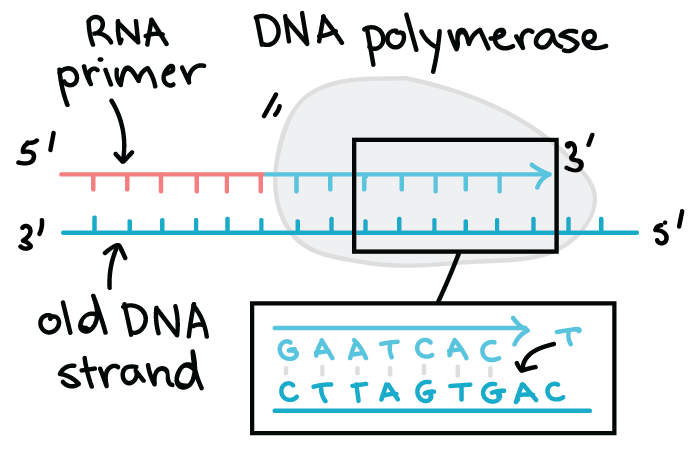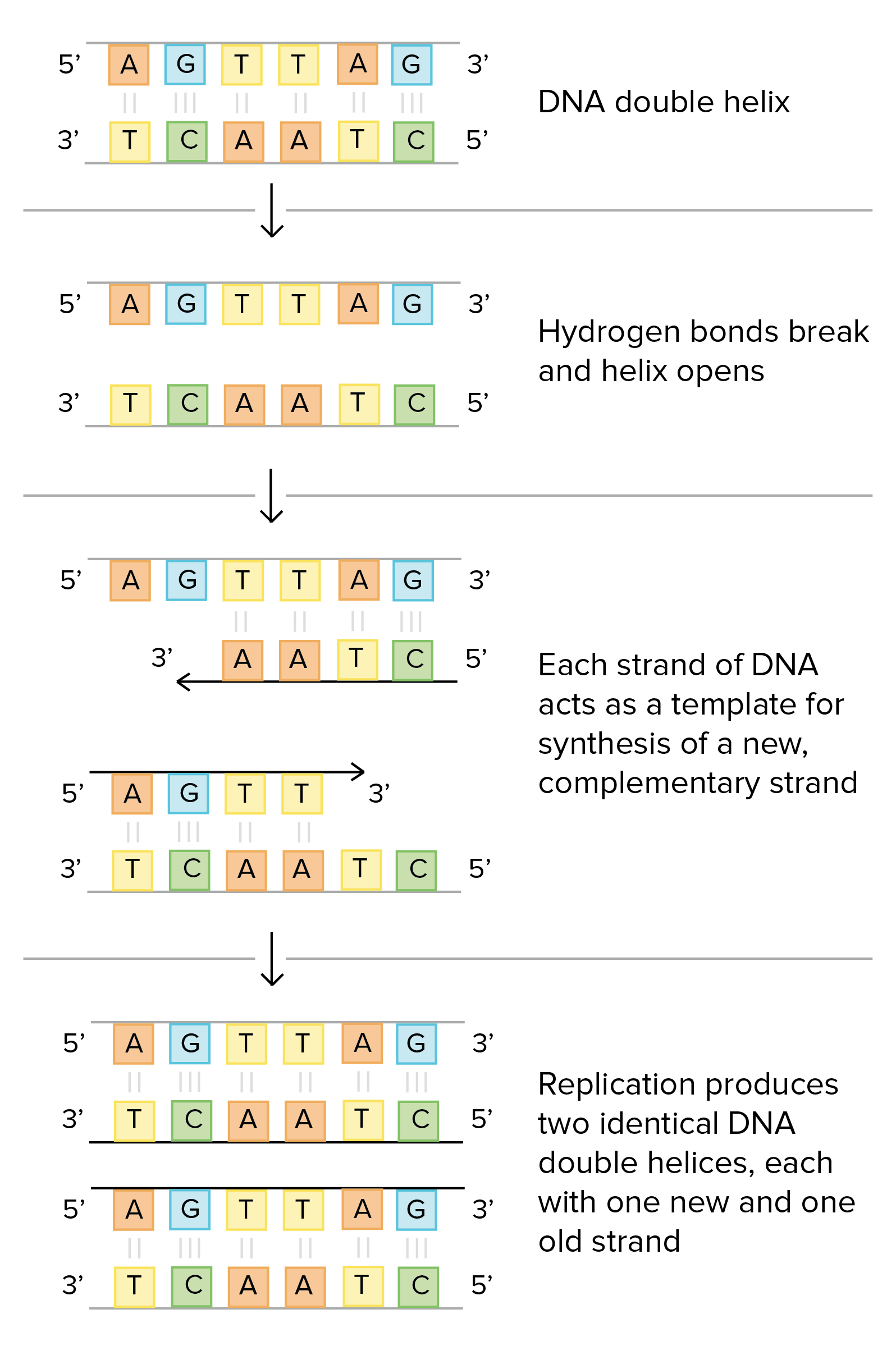Describe Dna Replication Using Base-pairing Rules and Dna Polymerase
What is the base pairing rule in DNA replication. DNA replication uses DNA polymerase to use one of the DNA template strands to make a complementary strand through base pairing.

Dna Base Pairs And Replication Biology For Majors I
Primers bind to the DNA and DNA polymerases add new nucleotide sequences in the 5 to 3 direction.

. Base pairing and chain extension create a. Adenine A always bonds with thymine T and cytosine C always bonds with guanine G. The DNA unzips by breaking the hydrogen bonds between the base pairs of the two strands.
So an enzyme that attaches many pieces of DNA. Each strand of the parental DNA duplex is conserved and copied by base-pairing with matching nucleotides and the result is two duplexes identical to the parental one. Similarly transcription uses RNA polymerase to make a complementary RNA strand thats connected by phosphodiester linkages with the same base pairing rules.
DNA polymerase attaches to one strand reads the nucleotide sequence and adds complementary new nucleotides to the growing strand. The double helix of the original DNA molecule separates blue and new strands are made to match the separated strands. Prior to replication the DNA uncoils and strands separate.
DNA polymerase uses the rules of complementary base pairing to pair an A with a T and a G with a C. This complementary pairing is important because it ensures that the sequence of nucleotides in the DNA remains the same thus coding for the same proteins. A replication fork is formed which serves as a template for replication.
Replication of Both Strands Proceeds by the Addition of Nucleotide Monomers in the 5-3 Direction and Others. This addition is continuous in the leading strand and fragmented in the lagging strand. Describe the basic steps of DNA replication.
Both polymerase synthesize nucleotides in a 5 to 3 direction. List and briefly describe the two basic steps of DNA replication. The process of DNA replication is catalyzed by a type of enzyme called DNA polymerase poly meaning many mer meaning pieces and ase meaning enzyme.
Replication relies on complementary base pairing that is the principle explained by Chargaffs rules. Replication is a Semi-Conservative Process. 24 rows DNA replication is a difficult concept to grasp but basically the two DNA base pairs.

Dna Base Pairs And Replication Biology For Majors I


0 Response to "Describe Dna Replication Using Base-pairing Rules and Dna Polymerase"
Post a Comment